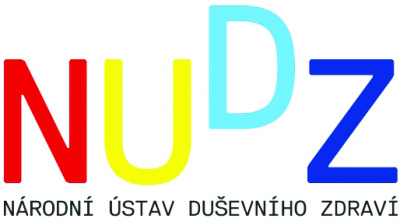PRESS PLATFORM: Predictive Phenomapping For Early-Stage Schizophrenia Subtypization
Technology description
| The name of the technology: | PRESS PLATFORM: Predictive Phenomapping For Early-Stage Schizophrenia Subtypization |
|---|---|
| Challenge: |
Schizophrenia represents heterogeneous diagnostic category that vary in functional outcome, prognosis and treatment responses. For this reason, there is an urgent need to develop biomarker-based subtypization models and thus allow for potential key-lock pharmacological interventions in homogenous patient populations. This approach adopted at very early stage of active illness phase represents a major prerequisite to avoid irreversible aversive outcomes that typically develop with chronicity. Using background knowledge on schizophrenia subtypes obtained from previous longitudinal MRI study, we will define cluster-specific latent baseline MRI biosignatures consisting of MRI morphometry, spectroscopy, white matter integrity and resting-state functional connectivity. |
| Description: |
A multimodal database to store and organize MRI data and framework for neuroimaging data quality assessment (QA) and processing with derivation of quantitative indices (named HYDRA database or HYDRAdb) has been already developed at the National Institute of Mental Health (NIMH) to prepare and organize large amount of data for multimodal analyses. The first step will be to design and develop a modular neuroimage analysis tool and repository for fully unsupervised automatic processing, classification, evaluation, and representation of MRI. Secondly, we will use clustering and dimension reduction techniques to map the key axes of variability in Normative dataset, in order to predict the 4-group SZ classification directly from individual single-shot baseline multimodal MRI. Those baseline multimodal data will contain (a) MRI morphometry, (b) proton magnetic spectroscopy form VOI of insula and anterior cingulate cortex, (c) diffusion tensor imaging (DTI) data related to white matter integrity measures, (c) resting-state fMRI data. This work package integrates all components into a unified system, enabled by an informative data infrastructure for access, and by a highly flexible and scalable system for data analytics and interpretation. This will enable the incorporation of data integration, processing pipelines and computational tools developed in previous work into a IT-aided framework of decision support system (DSS). The specific challenges in building the DSS tool include development of back-end aimed at secure storage and further automatic data processing, representation, annotation, analytics and integration of MRI data. The main aim is to design an integrated system displaying all measured and derived data in an intuitive, efficient and easy-to-navigate graphical interface that contributes to the decision process. The software will run MRI scan images and can access multiple MRI data files from already existing HYDRAdb housed in NIMH. Dynamic, user-friendly, interactive 2D graphs will be implemented, with both global representations of a given FES patient in a context of other subjects included in a normative database. The main readouts will be based on risk scoring systems to predict schizophrenia subtype alignment. |
| Commercial opportunity: |
The development and commercialization of PRESS PLATFORM will enable personalized healthcare for schizophrenia treatment right after the onset of illness. The project will yield a model where known biological information about the schizophrenia subtypization would increase the homogeneity of patient population and thus allow for development of targeted treatment. Consequently, PRESS PLATFORM would enable conduction of next-generation biomarker-driven clinical trial designs in SZ. Patients will benefit from improved treatment outcomes and earlier access to novel therapies. Pharmaceutical industries will benefit from a reduced time-to-market of new drugs through improved success rate of clinical trials by enrichment of particular schizophrenia subtypes, reduced number of patients per trial and reduced treatment time by cutting off the trial-and-error phase of treatments for patients. Complemented with the anonymized circulating protein database combined and validated computational MRI models for schizophrenia will enable NIMH to initiate and sustain a healthy R&D pipeline attractive to public and private funders, especially the pharmaceutical industry. |
| IP protection status: | The NIMH Neuroimaging-based subsidization model is subject to UK patent pending (UK patent GB2000634.2). There might be a substantially high benefit-sharing potential of predictive PRESS PLATFORM based on the future patenting of subtype-specific configuration of multimodal MRI markers. |
| Development status: |
Clinical trials |
| Partnering strategy: | Collaboration investment licensing |
| More information: |
DWYER, Dominic B., et al. Brain subtyping enhances the neuroanatomical discrimination of schizophrenia. Schizophrenia bulletin, 2018, 44.5: 1060-1069. MCGUIRE, Philip; DAZZAN, Paola. Does neuroimaging have a role in predicting outcomes in psychosis?. World Psychiatry, 2017, 16.2: 209. |
| Images: | No picture inserted |
| Categories: | Life Science and Health Diagnostics Research Tools |
| Owner of a technology: | National Institute of Mental Health |
